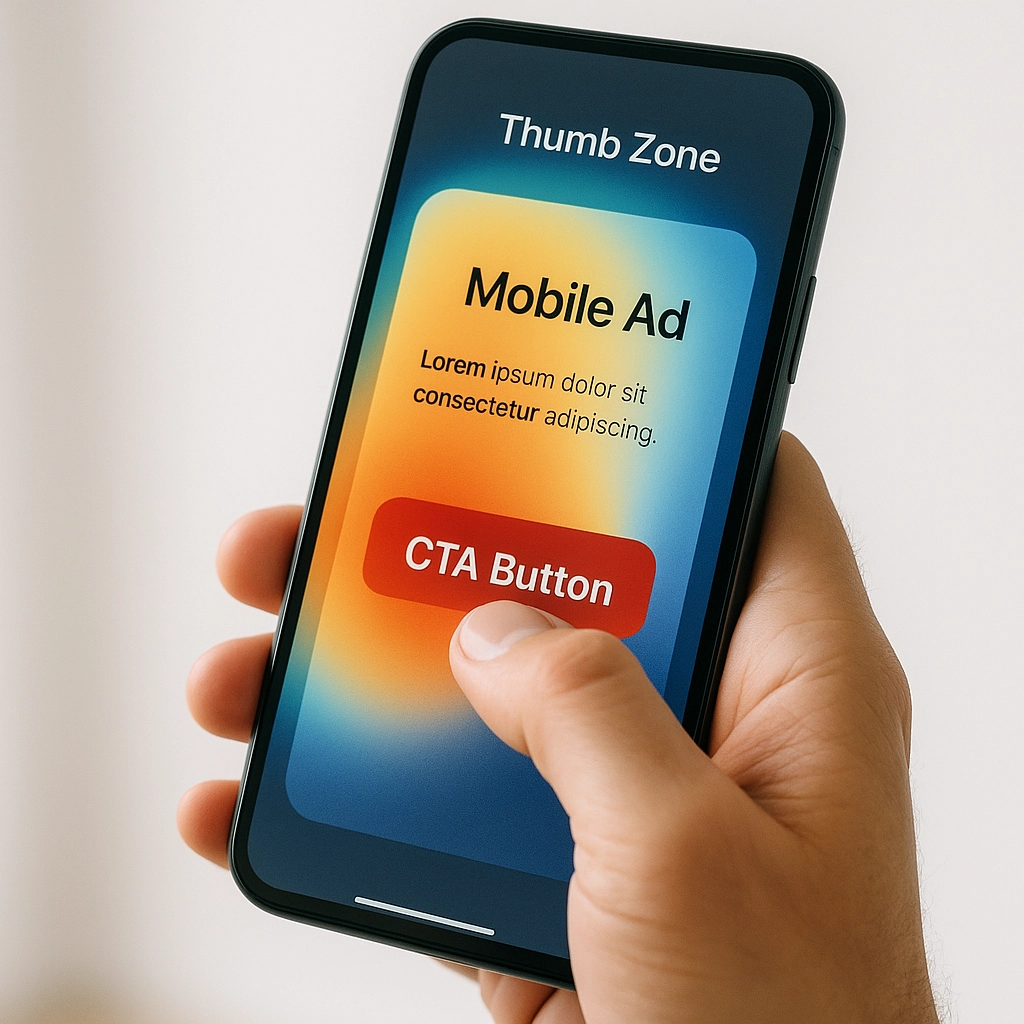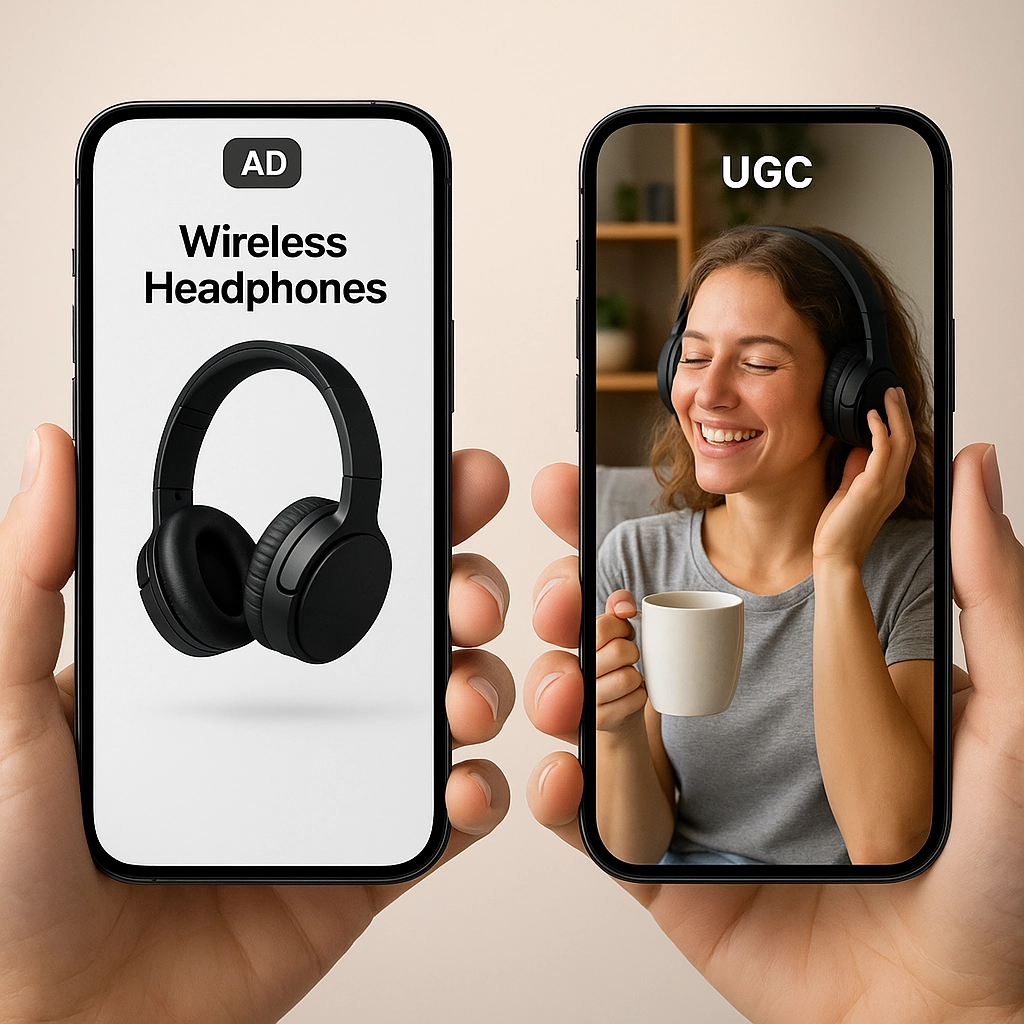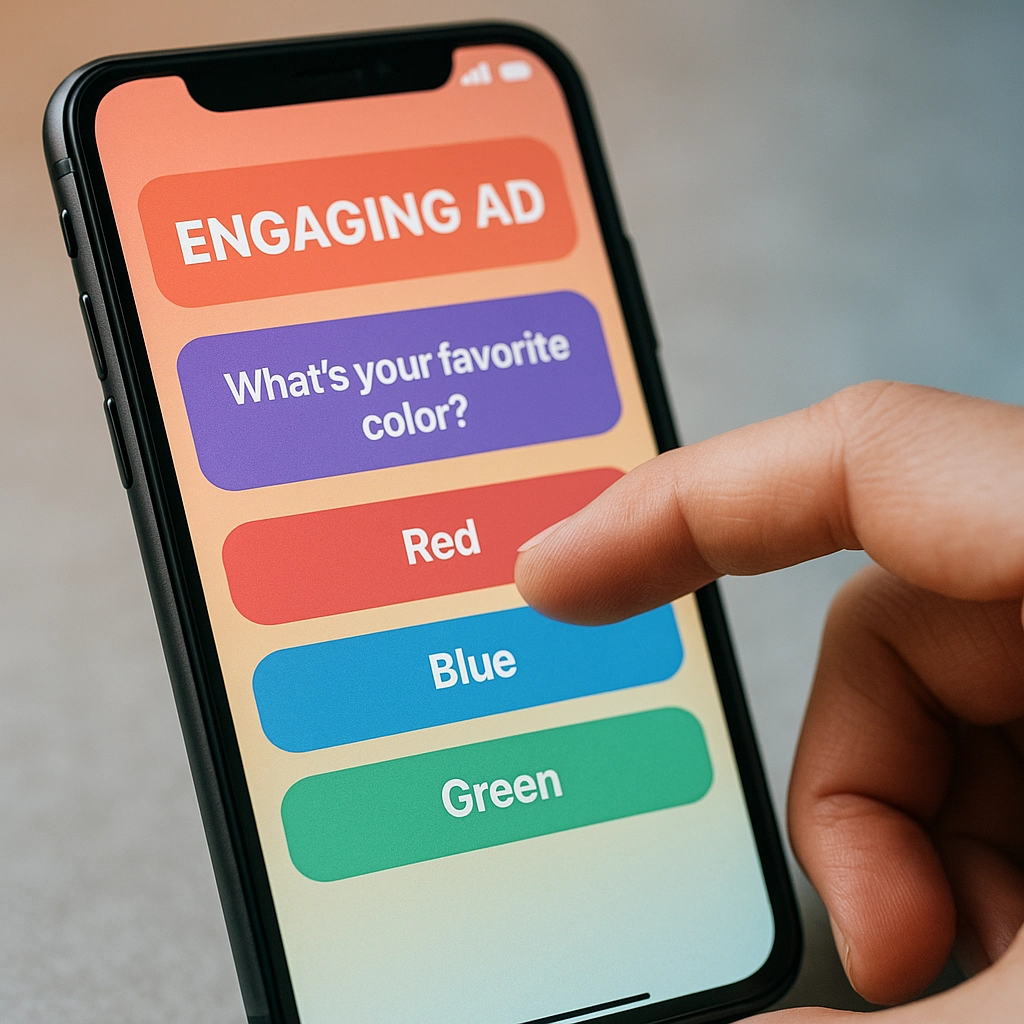The Mobile Attention Challenge
Let's face it: we're all glued to our phones. The average American spends over 4 hours daily on mobile devices, frantically scrolling, tapping, and swiping through a tornado of content. For advertisers, this presents both an opportunity and a massive challenge.
Your ads are competing not just with other brands, but with TikTok videos, Instagram Stories, text messages from friends, breaking news, and endless entertainment options. Standing out in this crowded space doesn't necessarily require a Fortune 500 budget—just smarter strategy.
At Bowman Advertising, we've helped dozens of clients transform their mobile ad performance without breaking the bank. Here's what actually works in 2025.
The Mobile-First Mindset Shift
Before diving into tactics, let's address a common mistake: designing for desktop and adapting to mobile as an afterthought. True mobile-first advertising inverts this approach.
Mobile isn't just a screen size difference—it's a fundamentally different user experience:
- Vertical orientation is the default viewing position
- Touch (not clicks) drives interaction
- Sessions are shorter but more frequent
- Attention spans are measured in seconds, not minutes
- Context matters enormously (where users are, what they're doing)
Understanding these differences is your first competitive advantage. Now let's explore how to leverage them.
1. Design for the Thumb Zone
The "thumb zone" refers to the area of a mobile screen easily reachable with the thumb while holding the device with one hand. It's the mobile equivalent of prime real estate.

Here's how to optimize for it:
- Place CTAs in the middle-to-bottom portion of the screen where thumbs naturally rest
- Make tap targets generously sized (minimum 44×44 pixels)
- Reduce form fields to absolute essentials (each additional field drops conversion by ~7%)
- Implement swipe gestures for natural mobile interaction
One client of ours, a local fitness studio, switched from a traditional "Click Here" button at the top of their ad to a prominent "Swipe Up" prompt at the bottom. Their click-through rate jumped 32% overnight with zero additional spend.
2. Embrace Vertical Video (But Do It Right)
Vertical video has evolved from a temporary trend to the dominant mobile content format. If you're still producing square or horizontal-only creative, you're leaving engagement on the table.
Best practices for vertical video ads in 2025:
- Front-load your message in the first 2 seconds
- Design for sound-off viewing with captions or visual storytelling
- Maintain a 9:16 aspect ratio for optimal display
- Keep file sizes under 4MB to prevent buffering abandonment
- Test variable lengths (6, 15, and 30 seconds perform differently by platform)
Pro tip: You don't need expensive equipment. Many of our clients achieve excellent results with smartphone footage that feels authentic rather than over-produced. One home services company we work with saw 3x higher engagement using casual smartphone testimonials versus their professional commercial spots.
3. Leverage Advanced Compression Techniques
Page load speed remains the silent killer of mobile ad performance. According to Google, 53% of mobile site visits are abandoned if pages take longer than 3 seconds to load. Your beautifully designed ad is worthless if it never renders.
Low-cost optimization strategies:
- Use WebP image format instead of JPG or PNG (30-40% smaller files)
- Implement lazy loading for below-the-fold content
- Remove unnecessary metadata from creative files
- Utilize modern compression tools like TinyPNG or Squoosh (many are free)
- Consider AMP versions for landing pages
A landscaping client of ours cut their ad costs by nearly 50% after we helped them implement these optimizations. Their ads loaded faster, which improved quality scores, which lowered their cost-per-click—a virtuous cycle that didn't require spending more.
4. Harness User-Generated Content (UGC)
Polished, professional ads often underperform against authentic user content. This is especially true for younger audiences who have developed sophisticated "ad blindness" to traditional marketing aesthetics.
UGC delivers three major benefits:
- Higher trust signals through social proof
- Lower production costs (users create content for you)
- More natural platform fit (blends with organic content)
How to implement UGC without a massive following:
- Create branded hashtag challenges with modest incentives
- Partner with micro-influencers (1K-10K followers) in your niche
- Feature customer testimonials and reviews in creative formats
- Run contests that generate shareable content
- Repurpose positive comments as ad creative

One retail client implemented what we call a "tag-to-be-featured" strategy, encouraging customers to share photos with their products for a chance to be featured in their ads. This generated hundreds of authentic images they could use with permission, saving thousands in production costs while increasing engagement by 78%.
5. Master Micro-Segmentation (Without Third-Party Cookies)
In the post-cookie landscape of 2025, smart advertisers have pivoted to first-party data and contextual targeting. This approach can actually be more cost-effective than broad targeting.
Low-budget segmentation strategies:
- Build look-alike audiences from your highest-value customers
- Create custom audiences based on engagement with your content
- Utilize in-app behaviors rather than demographic assumptions
- Target by content consumption patterns rather than personal attributes
- Implement sequential messaging that builds through the funnel
A dental practice we work with abandoned their broad local targeting in favor of highly specific contextual segments (people consuming content about teeth whitening, invisalign, etc.). Their cost per lead dropped by 37% while conversion quality improved.
6. Embrace Interactive Ad Formats
Static banners are the billboard of the mobile world—easy to ignore. Interactive formats demand attention without demanding bigger budgets.
Cost-effective interactive options:
- Playable mini-games related to your product
- Interactive polls or quizzes that provide value
- "Try before you buy" AR experiences
- Swipe-through product catalogs
- Choose-your-own-adventure narratives

Implementation tip: Start with simpler interactive elements like polls or swipe-through galleries before investing in more complex experiences like AR or playables.
A cosmetics client implemented a simple "Which shade matches your skin tone?" interactive poll in their mobile ads. Not only did engagement increase by 3X, but the data collected helped them target future ads more effectively.
7. Test Smart SMS Integration
While not strictly an "ad" format, strategic SMS marketing achieves what mobile ads aspire to: immediate attention. With open rates exceeding 95% (usually within minutes), SMS cuts through the noise like nothing else.
Best practices for SMS in your mobile strategy:
- Reserve for high-value messages to prevent opt-outs
- Personalize beyond just inserting a name
- Include clear, tap-able CTAs
- Time delivery strategically based on user behavior
- Keep messages under 160 characters to avoid splitting
Example strategy: Instead of running a continuous ad campaign, one client implemented a "flash sale" approach with SMS notifications followed by targeted mobile ads during a compressed 48-hour window. This concentrated approach generated more sales with 40% less ad spend.
As we explored in a recent case study, timing and channel coordination often matter more than ad creative alone.
8. A/B Test Relentlessly (But Scientifically)
Many advertisers waste money by testing too many variables simultaneously or making decisions on statistically insignificant results. Proper A/B testing doesn't cost more—it ensures the money you're already spending works harder.
Low-budget testing framework:
- Test one variable at a time (headline, image, CTA, etc.)
- Establish minimum sample sizes before drawing conclusions
- Use statistical significance calculators to validate results
- Document all tests in a central knowledge base
- Apply learnings across campaigns
One e-commerce client implemented what we call "Micro-Test Mondays"—dedicating a small budget each week to testing a single variable. Over six months, these incremental improvements compounded to a 127% improvement in ROAS without increasing their overall budget.
Bringing It All Together: The Mobile-First Flywheel
The most powerful approach combines these strategies into what we call a "mobile-first flywheel"—where improvements in one area drive performance in others:
- Better compression → faster loading → higher quality scores → lower CPCs
- Vertical creative → higher engagement → better algorithm performance → more impressions
- UGC implementation → greater authenticity → increased trust → higher conversion rates
- Interactive elements → longer engagement → improved relevance scores → better placement
Each enhancement creates efficiency that can be reinvested in further optimization rather than simply spending more.
Next Steps: Your 30-Day Mobile Refresh Plan
Ready to implement these strategies? Start here:
- Week 1: Audit your current mobile ads for load speed, aspect ratios, and tap target sizes
- Week 2: Test vertical video formats against your current creative
- Week 3: Implement one interactive element in your highest-performing ad
- Week 4: Develop a UGC collection strategy and test against professional creative
Need help implementing these strategies? Bowman Advertising specializes in helping businesses cut through the mobile noise without breaking the bank. Our strategic approach focuses on maximizing results through smarter tactics rather than bigger budgets.
Remember: in mobile advertising, how you spend often matters more than how much you spend. By implementing these cost-effective strategies, you'll not only cut through the noise—you'll make competitors wonder how you're doing so much with seemingly so little.
